Gallery of Illustrated Art
Civic Resistance in Nicaragua — Freedom and Democracy
The exhibition “Civic Resistance in Nicaragua — Freedom and Democracy” is a traveling screen print showcase that visually narrates the dignity, creativity, and determination of the Nicaraguan people in the face of state repression. Through 16 screen-printed illustrations, this gallery documents symbolic acts of civic resistance and nonviolent action, from everyday gestures to organized collective expressions that emerged during and after the social uprising of April 2018.
The exhibition has been presented in key political and cultural advocacy spaces, including the 54th General Assembly of the Organization of American States (OAS) in Asunción, Paraguay, Florida International University (FIU) U.S, and the Legislative Assembly of Costa Rica. Based on that regional experience, and with the aim of expanding its reach, it is now available in virtual format through the website of the Institute for Peace and Development (IPADES). This digital version not only multiplies the possibilities for dialogue, remembrance, and denunciation—it also invites viewers, from anywhere in the world, to explore the images and stories that have shaped the fight for freedom and democracy in Nicaragua.
Below, we present the 16 artworks that make up this gallery, each accompanied by its narrative and context.

Marches and Pot-Banging Protests
Between 2018 and 2021, Nicaragua witnessed more than 300 marches, with hundreds of thousands of people banging pots and pans in over 100 cities and towns as a peaceful protest against the Sandinista dictatorship of Daniel Ortega and Rosario Murillo.
Cacerolazos—a form of protest involving loud banging of pots, pans, and other kitchen utensils—allowed citizens to express their dissent in a visible and safe manner, avoiding direct confrontations amid intense government repression.
Despite the crackdown and forced exile of many activists, democratic forces and the international community continue their struggle to reopen civic space and restore democracy in Nicaragua.
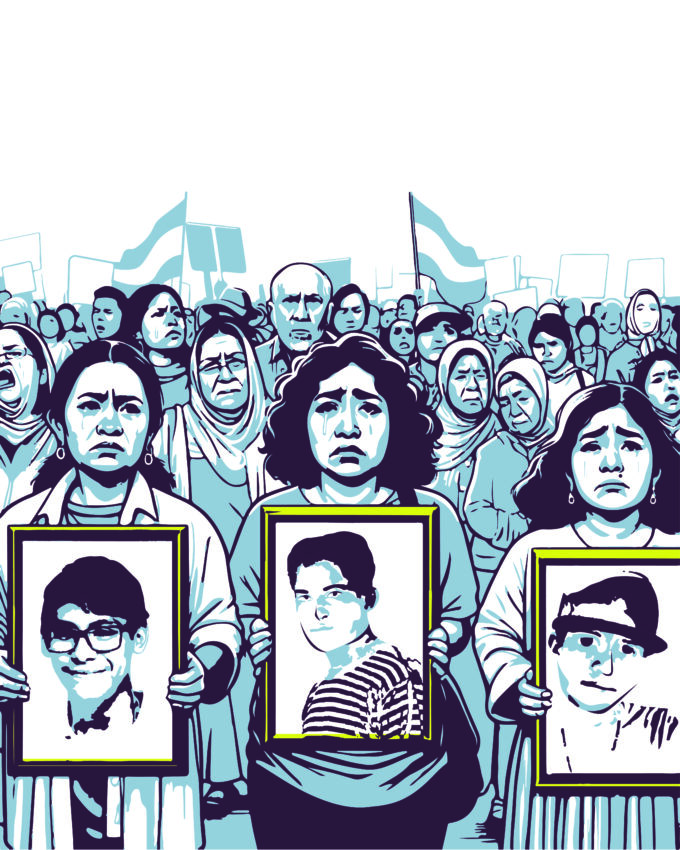
Families of the Victims
Mothers and Relatives of Victims have become a powerful symbol in the fight against impunity in Nicaragua, especially after the May 30, 2018 massacre, in which dozens of people—including students—were killed during a peaceful demonstration. These mothers and family members, who lost their children and loved ones during the anti-government protests, have organized to demand justice and to keep alive the memory of those killed by Nicaraguan security forces.
The brutality of the attacks—including sniper fire aimed at unarmed youth—has sparked deep indignation and mobilization both within and beyond the country, despite ongoing repression and the government’s lack of political will to clarify the crimes and comply with international human rights recommendations.
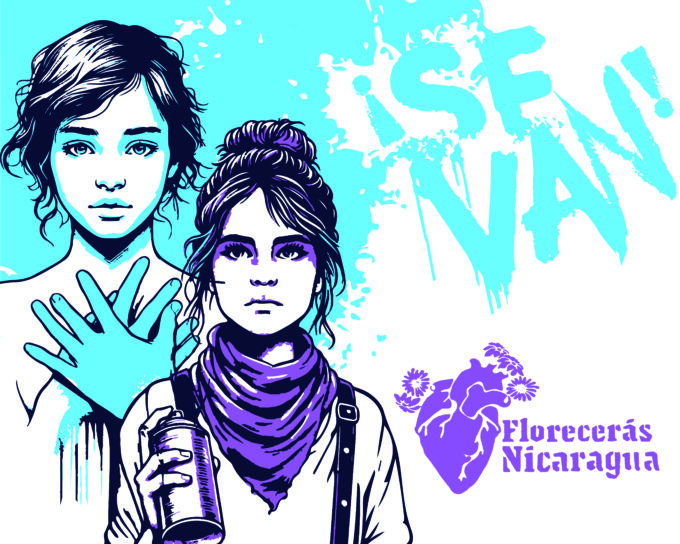
Political Stenciling and Artivism
Despite the threat of persecution and imprisonment by the regime, neighborhood residents persisted in beautifying their surroundings with the colors of the national flag—openly defying established authority.
This symbolic action, though criminalized, represented a gesture of solidarity with social protests and a public rejection of repressive policies. In addition, stencils bearing opposition images and messages—such as Ortega’s face with a Hitler-style mustache and calls for his resignation—spread throughout the country as part of a self-organized protest strategy.
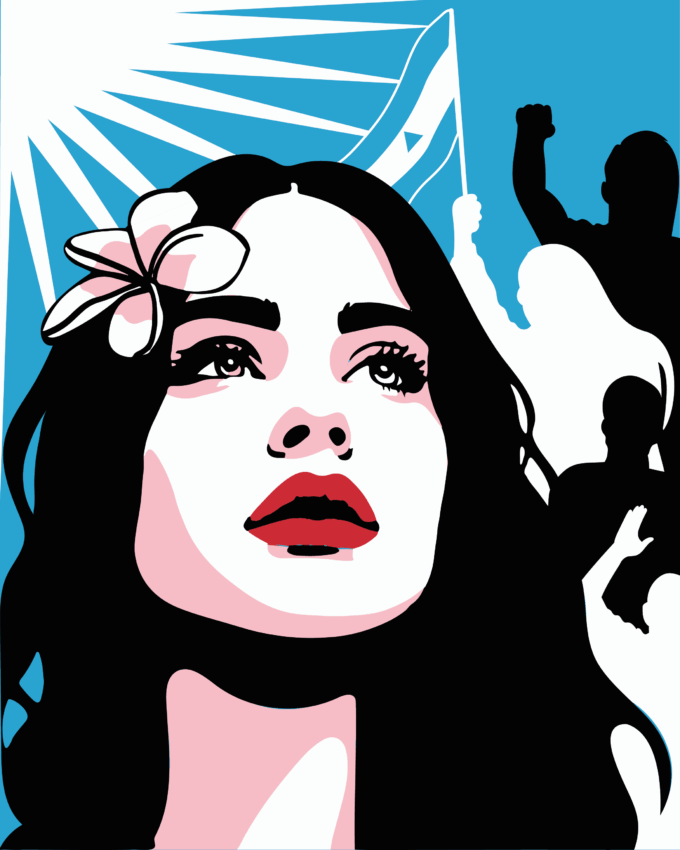
Yo soy pico rojo
The “Pico Rojo” campaign (I Am Red Lips) emerged in Nicaragua as a creative and safe form of civic resistance amid state repression following the April 2018 social uprising.
The gesture began when a group of women, detained during a protest, painted their lips red as a symbol of defiance and dignity. That spontaneous act went viral under the hashtag YoSoyPicoRojo, inviting people inside and outside the country to share images with painted red lips as a show of solidarity.
The campaign succeeded in highlighting the repression, demanding the release of political prisoners, and amplifying—through a small gesture—the collective power of civil disobedience.
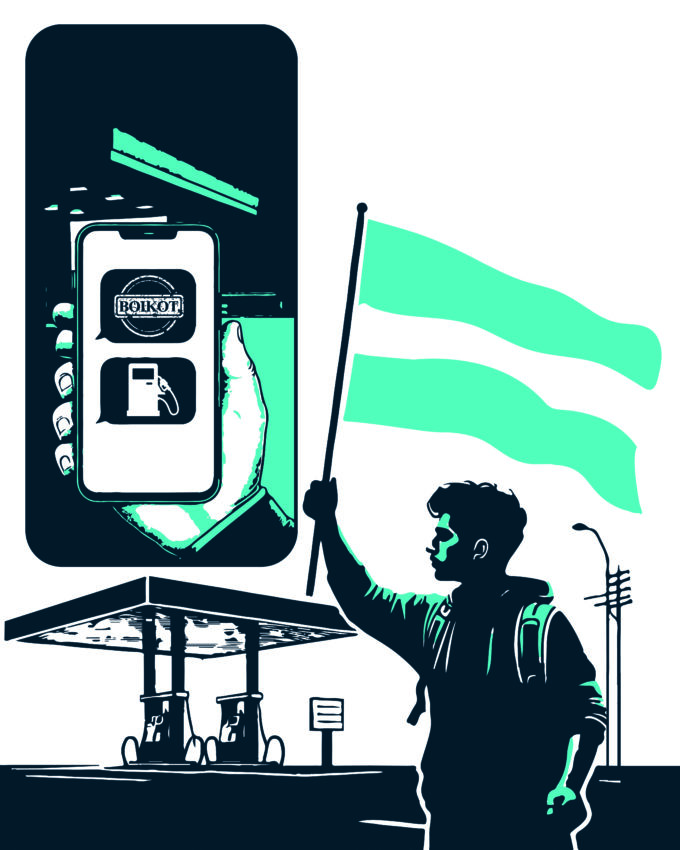
Boycott Corruption
Pro-democracy groups in Nicaragua have called for boycotts of businesses linked to Sandinismo, accusing them of being complicit in state repression and violence.
This civic protest and act of resistance aims to economically weaken the regime and its allies who support the repression, urging the population to stop consuming at these establishments.
The strategy has proven effective, forcing some regime-affiliated businesses to rebrand—including changes in the names of gasoline station chains complicit with the regime, among others.
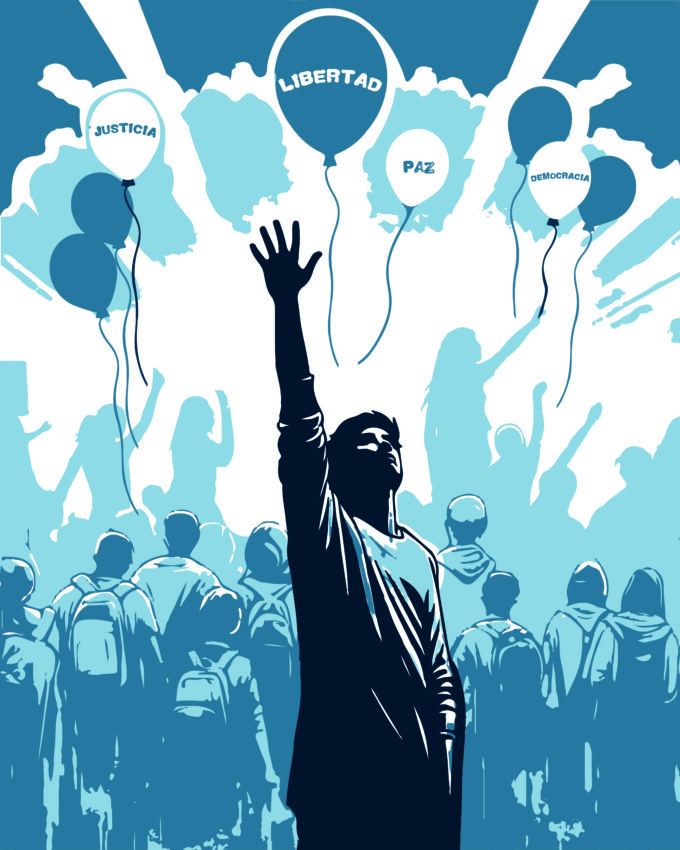
Balloons and Confetti
Throwing confetti and balloons (known as chimbombas in Nicaragua) in blue and white across the streets became a powerful symbol of civic resistance against Sandinismo.
Released by self-organized protesters, these balloons carried messages denouncing the dictator and his misgovernance, along with demands for the release of political prisoners.
Inflated in the colors of the national flag, the balloons embodied a bold challenge to established power—especially in a context where carrying the national flag is grounds for imprisonment.
Despite repression from the authorities—including balloon puncturing and intimidating gunfire—protesters continued to use this tactic throughout the demonstrations.
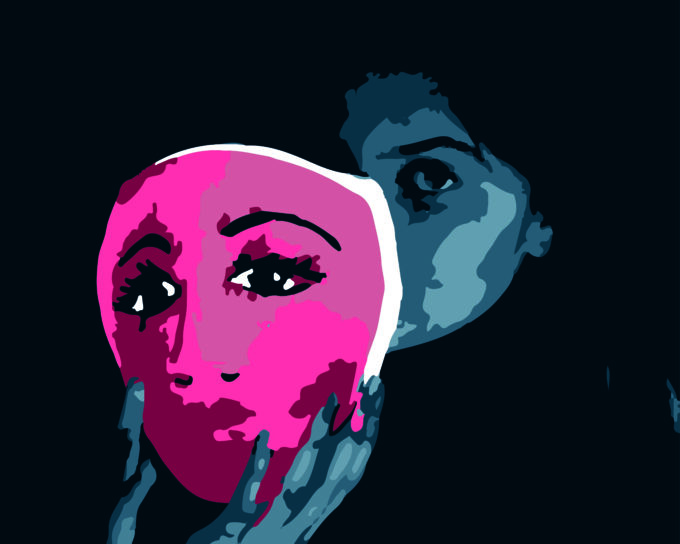
Monimbó Resistance Masks
In the Indigenous neighborhood of Monimbó, handcrafted masks are not only a form of mockery toward power—they have become a powerful symbol of resistance against the dictatorship in Nicaragua.
Since the April Uprising, these masks have protected the identities of those who wear them, allowing the struggle to continue in a peaceful and civic manner.
Through artisanal creativity, the people of Monimbó express their discontent with the regime of Daniel Ortega, keeping the flame of resistance alive even amid repression and constant persecution by government forces.
The masks are not only a physical shield but also a reminder of the determination of a people who refuse to surrender in the face of oppression.
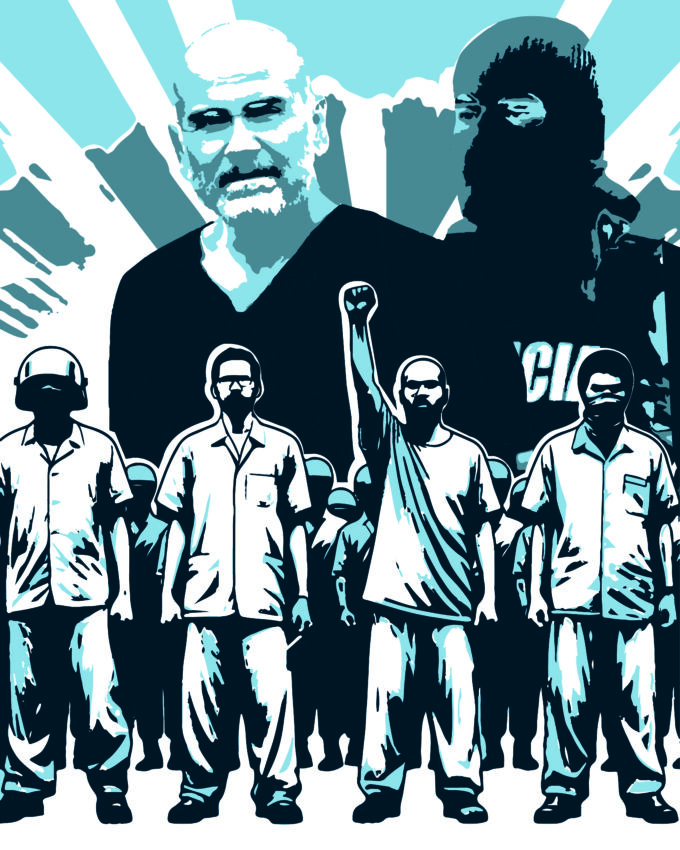
Free the Political Prisoners!
The persistent struggle of political prisoners in Nicaragua stands as an indelible testament to the civic resistance of the Nicaraguan people against the oppression of the Sandinista dictatorship.
From within the prison walls, these brave individuals continue to protest—whether through hunger strikes, symbolic acts, or simply by keeping their voice of dissent alive.
Even in the face of extreme adversity—including inhumane conditions and the risk of death—their unwavering determination for freedom and justice inspires an entire nation not to give up in its pursuit of genuine democratic change.
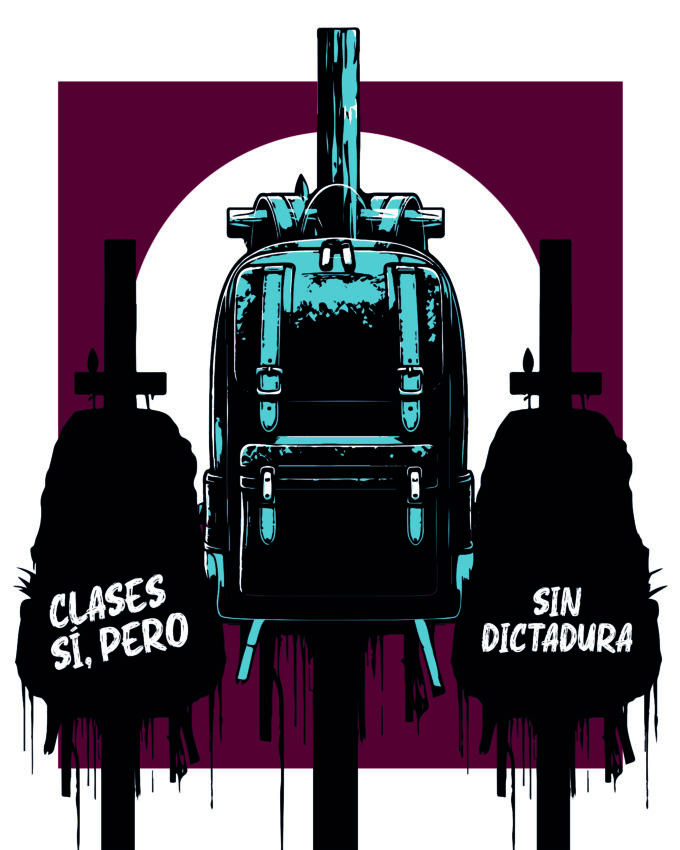
The Crosses March
The student marches in Nicaragua were peaceful mobilizations against the Sandinista dictatorship, demanding justice and the restoration of university liberty.
A powerful symbol of these protests was the backpacks mounted on crosses, representing students killed by government repression. This symbolic act honored the victims and condemned state violence, underscoring the sacrifice of young people in the struggle for freedom and democracy.
Despite ongoing persecution, students remained organized and committed to their cause, employing creative and peaceful methods of protest.
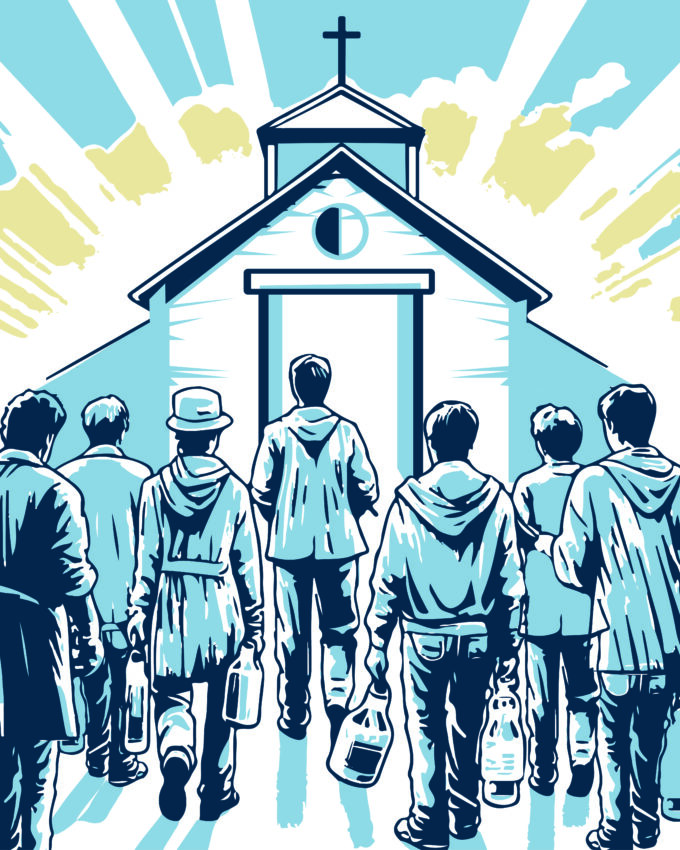
The Water Bearers
During the social protests in Nicaragua, a group of young people known as the Water Bearers organized to support the mothers of political prisoners who were on hunger strike inside San Miguel Arcángel Church in Masaya. They provided water and humanitarian assistance as an act of solidarity in the face of government repression.
Instead of recognizing their gesture, the regime responded with arbitrary arrests and false accusations. The mothers had been confined in the church for over a week, without access to drinking water, electricity, or basic supplies—resisting under harsh conditions while demanding the release of their imprisoned children.
From behind prison walls, these brave individuals continue their protest—through hunger strikes, symbolic demonstrations, or simply by keeping their voice of dissent alive.
Even in the face of extreme adversity—including inhumane conditions and the threat of death—their unwavering commitment to freedom and justice remains intact, inspiring a nation not to give up its pursuit of genuine democratic change.
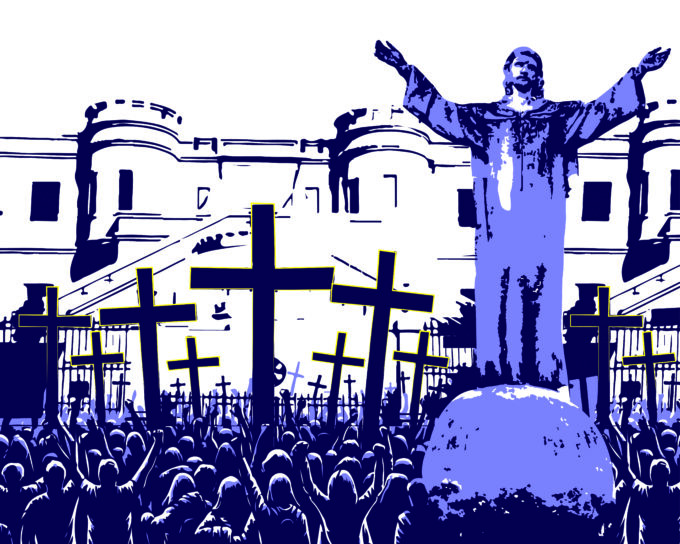
Where It Hurts, Resistance Lives
Thousands of Nicaraguans formed a striking human chain along a busy avenue in Managua, demanding the resignation of Daniel Ortega and Rosario Murillo and an end to the violence that has claimed hundreds of lives amid ongoing protests.
With national flags in hand, demonstrators gathered between the Rubén Darío and Jean Paul Genie roundabouts, covering a distance of 3.5 kilometers.
Meanwhile, in exile, others assembled at the Plaza de la Democracia, shouting “Freedom and Justice” from afar.

Masaya in Defiance
In Masaya, women and citizens used nighttime audio recordings to challenge General Commissioner Ramón Avellán, identified by the UN as part of the police leadership responsible for crimes against humanity.
Using megaphones, activists broadcast humorous and daring messages from behind the barricades, mocking Avellán and questioning his role in the repression.
These recordings, which quickly went viral on social media, became a creative form of civic resistance—highlighting the bravery of Masaya’s people in the face of police brutality.
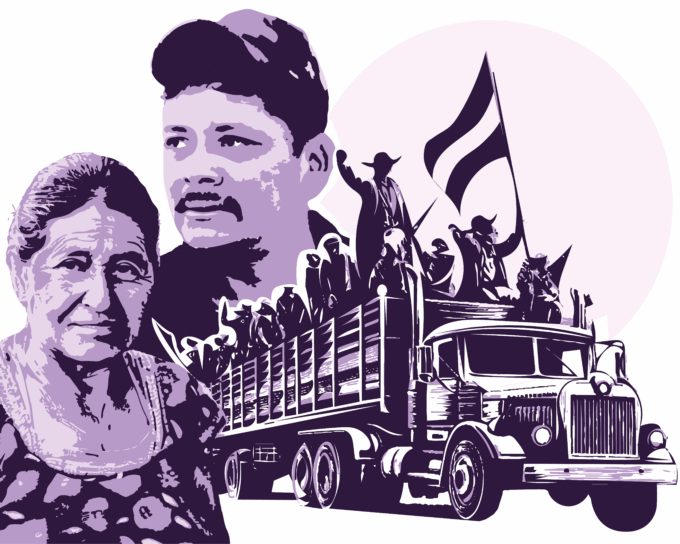
Peasant Movement
The peasant movement in Nicaragua has emerged as a symbol of resistance and civic defiance against the repressive policies of the Sandinista regime under Daniel Ortega and Rosario Murillo.
Since 2013, the movement has led more than 100 protest marches against Law 840, which seeks to expropriate the land of thousands of farming families for the proposed interoceanic canal project.
However, repression has forced many peasants to live in hiding, flee into exile, or face imprisonment and violence.
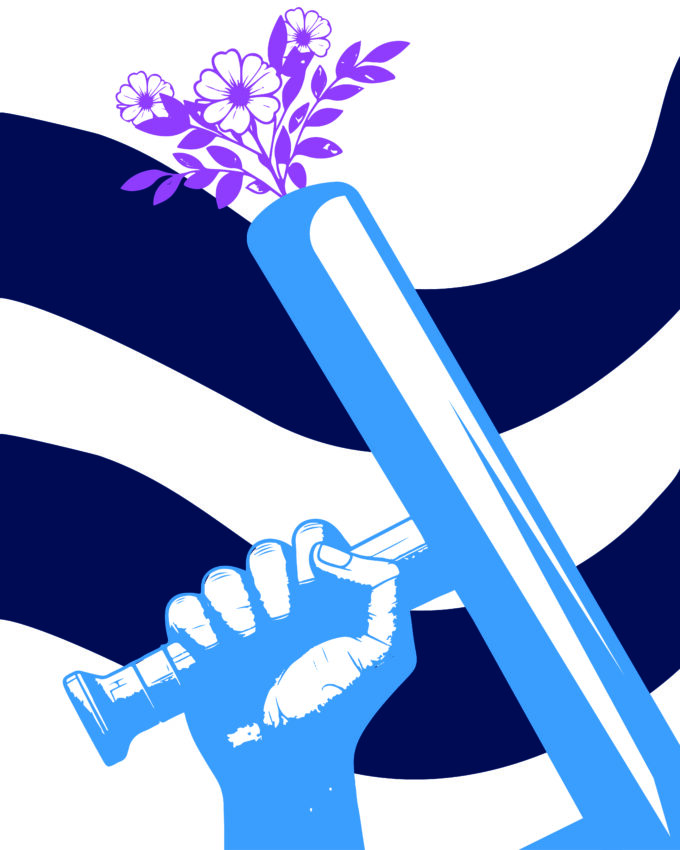
Nicaragua Will Bloom Again!
During the protests in Nicaragua, neighborhoods and communities organized to protect themselves against nighttime repression.
In fear of raids and arbitrary detentions, families set up watch shifts, blocked access points with improvised objects, and sounded alerts about the presence of motorized groups.
These citizen networks also provided shelter, food, and support to those participating in the marches.
In the face of state violence, neighborhood solidarity became a vital form of civic resistance and collective care.
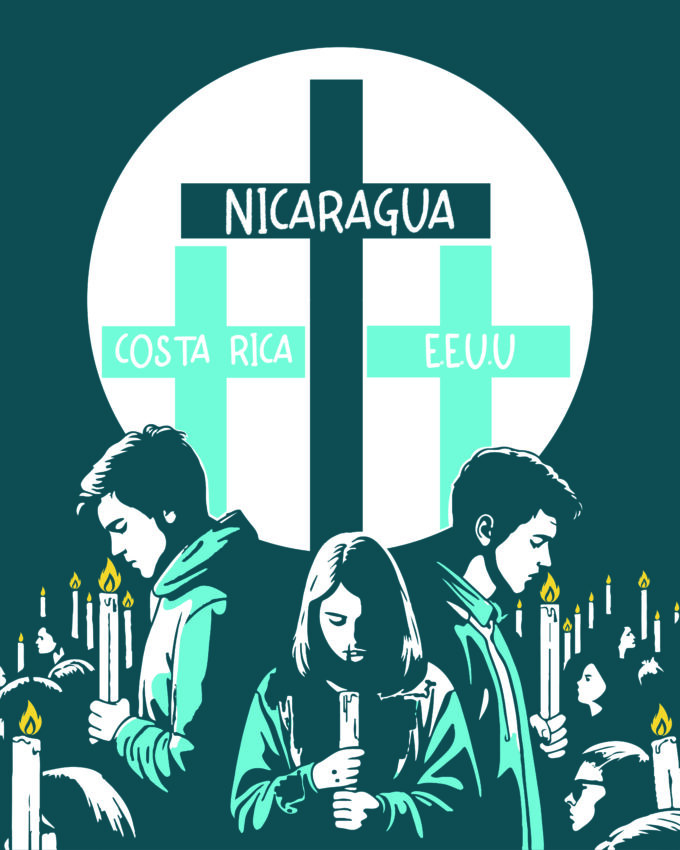
Faith as a Voice of Citizenship
Amid the protests in Nicaragua, masses and vigils have become essential acts of resistance and commemoration.
The church, as an institution, has offered spiritual refuge and a space of solidarity for demonstrators, allowing Christian faith to serve as a beacon of hope in times of adversity.
Moreover, the white crosses placed in emblematic sites such as the Jean Paul Genie roundabout in Managua and the Plaza de la Democracia in Costa Rica not only symbolize the memory of those who fell during the protests—they also represent the ongoing struggle for justice and the rejection of impunity.
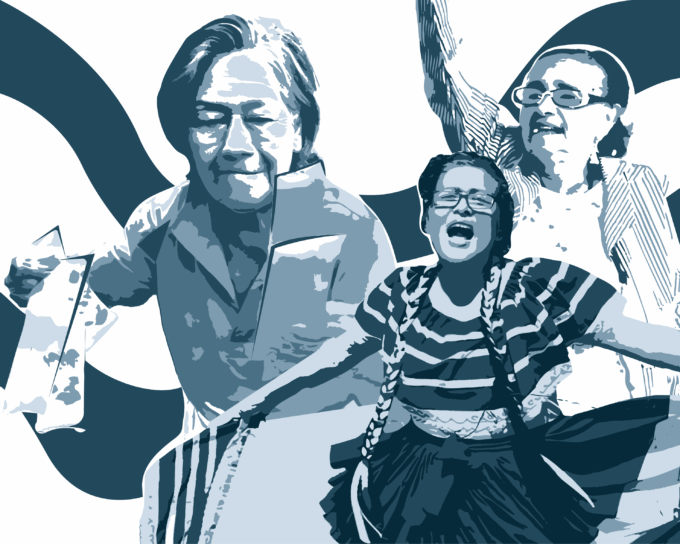
Vandal Grannies
The “Vandal Grannies”—Doña Coquito, Doña Amanda Tinoco, and Doña Flor, known as the Lady in the Huipil—played a fundamental role in the protests.
Doña Coquito, known for handing out ice-cold water to the mothers of victims, became a symbol of civic resistance. Despite health challenges, her presence at marches inspired many.
Doña Flor stood out for wearing a blue and white huipil during demonstrations, representing her peaceful protest. Despite being detained multiple times, she remained steadfast in her activism.
Doña Amanda, a grandmother from Matagalpa, raised her voice during mobilizations with her firm cry: “Let them go!”.

